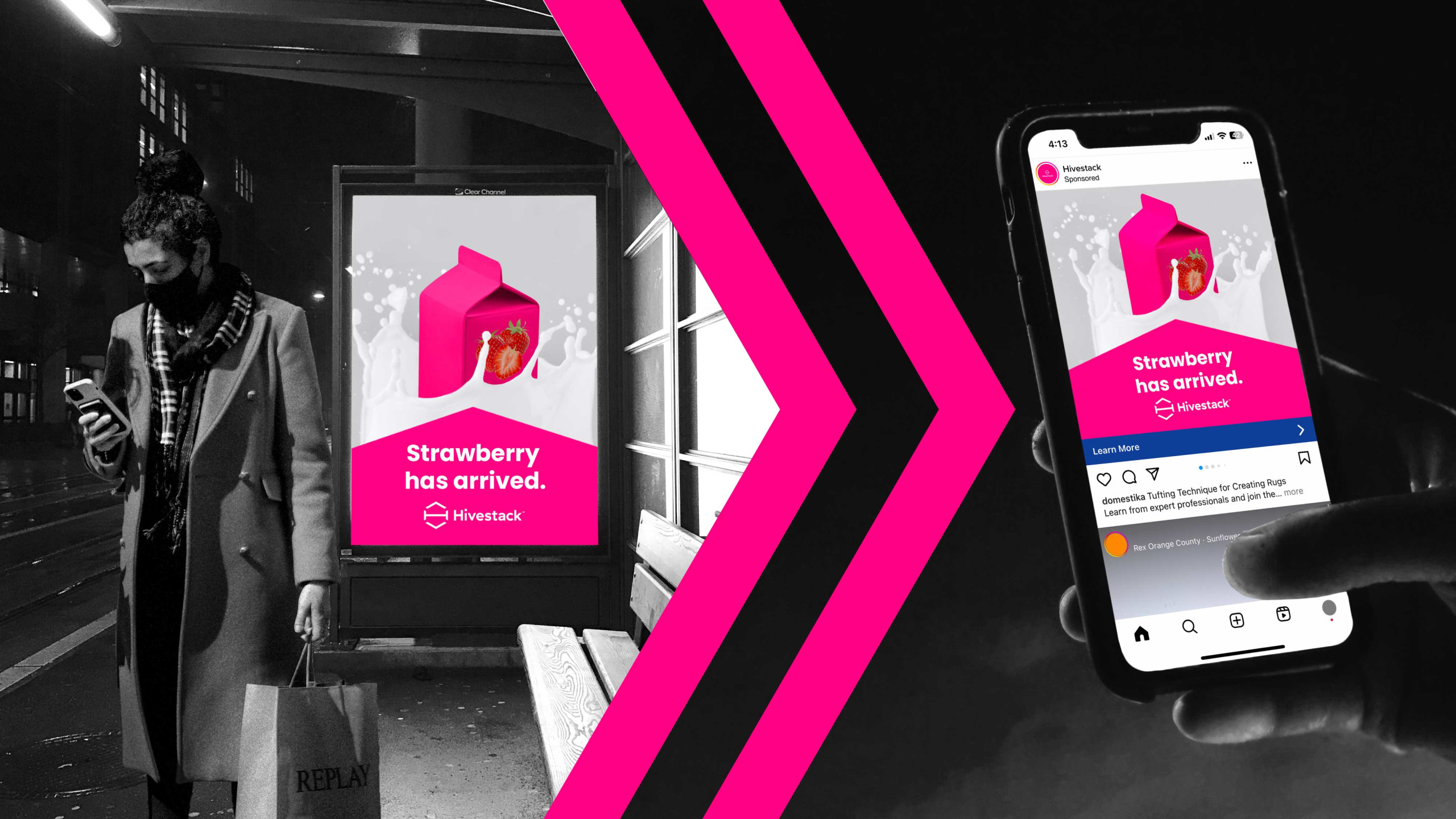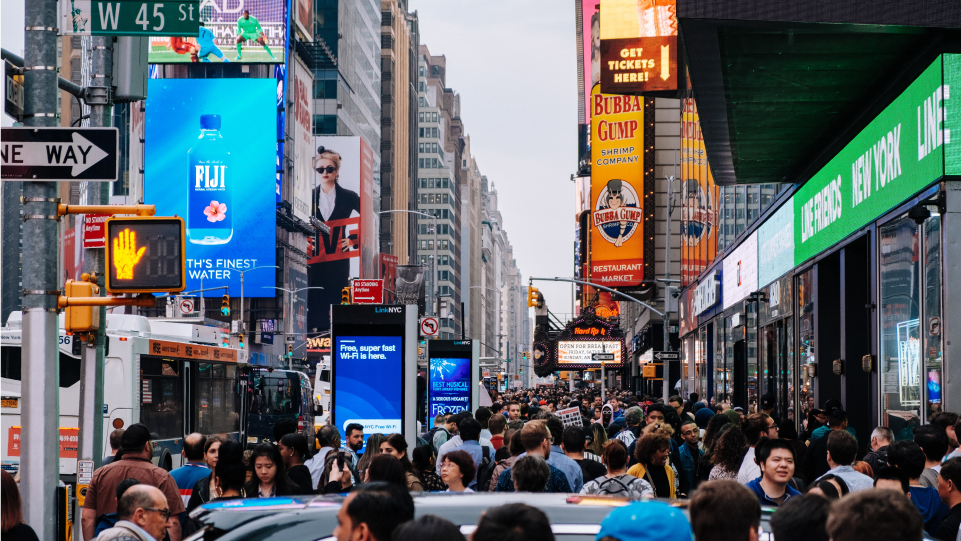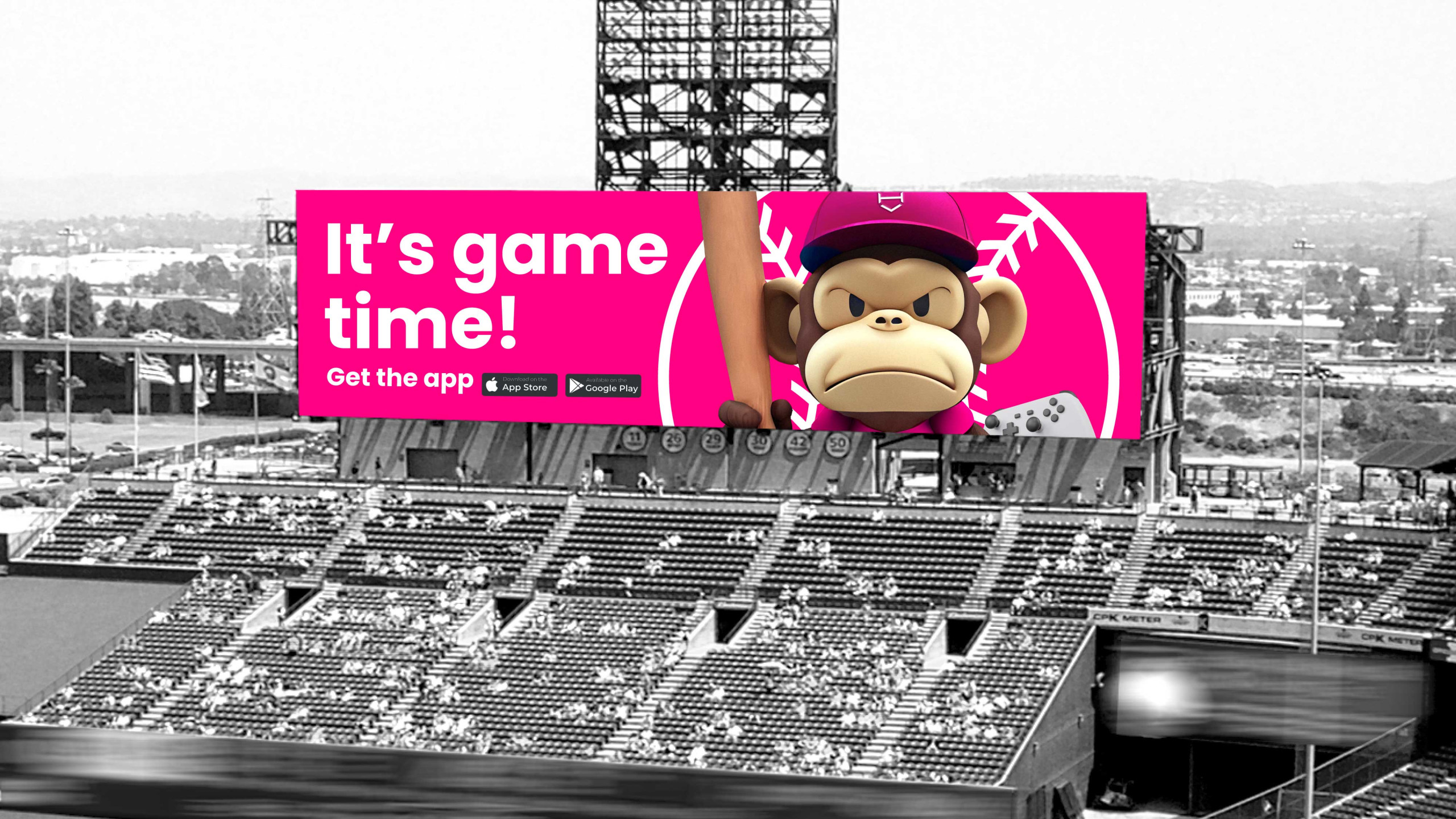April 19, 2023 | Expert Insights
Cross Channel Synergies - Benefits of Combining Mobile & DOOH

Combining mobile and digital out of home (DOOH) advertising has become a popular strategy for marketers looking to reach their target audience more effectively. Although mobile focuses on a one-to-one interaction and DOOH provides a one-to-many approach, they share the benefit of offering a continuum of messages that can connect with consumers throughout their journey.
With 6.8 billion smartphone users worldwide, advertisers can leverage the data-driven benefits of both channels to improve the contextual relevance of their campaigns and reach the right audience at the right time with more creative options.
Here are the top 5 benefits of combining mobile and DOOH advertising:
1. More precise targeting, with impactful results
By combining the precision and scale of DOOH advertising with the agility of mobile, buyers are able to drive reach and engagement metrics, which can ultimately lead to higher conversion rates and sales. In a recent campaign run by Initiative for LEGO in Italy, the combination of mobile and DOOH resulted in an incremental increase in footfall traffic, driving 37,000 visits to LEGO stores. The campaign utilized custom audience targeting through the Hivestack DSP and also combined mobile advertising by retargeting those who were exposed to LEGO’s DOOH ads.
2. Building loyalty through consistent, sequential messaging
One of the primary benefits of combining mobile and DOOH advertising is the cross-channel reach marketers can achieve, allowing them to leverage the unique strengths of multiple digitally optimized channels to target audiences when they are online via mobile and offline as they move around outside of the home. For instance, in programmatic DOOH advertising, aggregating unique sources of audience data allows buyers to create custom audience segments and analyze movement patterns to understand precisely when and where to target customers while they are on the go. For retail brands with brick-and-mortar stores, this approach can yield significant results as geo-location data can then be used to select DOOH screens within a set parameter of a point of interest (POI), such as a retail store or directly at the point of sale. With DOOH, campaigns can be optimized in-flight allowing for greater control over creative and messaging. In turn, this DOOH campaign data can then be leveraged for marketers looking to build further brand awareness and loyalty by reaching the same consumers via mobile with consistent messages or retargeting them after they have been in proximity to the DOOH activation.
3. Increasing the opportunity for creativity
The convergence of mobile and DOOH advertising creates ample opportunities for marketers to exercise their creativity. Animation and sound off features are widely prevalent on both channels, and augmented reality (AR) and 3D experiences can be seamlessly integrated into DOOH campaigns with mobile engagement. We saw the emergence of Dynamic Creative Optimization (DCO) in DOOH, allowing marketers to capitalize on key “moments” and a consumer's state of mind in real-time, resulting in a more human, memorable and contextual connection. The pandemic also gave rise to the comeback of the QR code in many global markets. Including these codes in environments such as DOOH provides advertisers with an additional layer of interactivity and measurable touchpoints with their target audiences. Consumers can easily access the campaign’s content instantly, or save it on their phones for later, creating a more personal connection between brand and customer. By leveraging these innovative techniques, marketers can elevate the customer experience and leave a lasting impact.
4. Diversified audience data sources
Obtaining a multi-dimensional perspective into consumer behaviors can provide unparalleled advantages for marketers seeking to create a more holistic approach to targeting. Combining mobile and DOOH advertising allows brands to collect insights from both channels, providing more input for measurement and optimization. In further, a multi-media campaign allows for layers of audience segments to be applied and, when facilitated programmatically, reanalyzed in realtime to optimize against the best performing segments. By utilizing data from both channels, businesses can gain a better understanding of their target audience, how to reach them and adjust their campaigns accordingly. OMD Italia, Ask Locala and Henkel Italia were able to measure and optimize through in-store visits to Esselunga stores in real time by activating mobile and programmatic DOOH together at the same time and by combining the results.
5. Activating towards social media
OOH advertising and social media platforms are natural collaborators. With an increase of influencers and social media users posing alongside OOH ads, posting it on their channel and using hashtags associated with campaigns, the opportunity to create a synergy between these two mediums almost seems obvious. Marketers can create campaigns that encourage social media engagement, using call-to-actions on mobile and interactive DOOH ads to drive customers to share their experiences on social media platforms. A great example of combining social and DOOH was the Matrix Resurrections campaign that was activated in Japan; which included tweets from fans using the custom hashtag and were displayed on premium LIVE BOARD billboards.
Combining mobile and DOOH advertising can provide marketers with a powerful way to reach their target audience more effectively. By leveraging the strengths of each channel, buyers can achieve better results, improve brand consistency, and benefit from more creative options. With the ability to interchangeably use mobile data and DOOH targeting within a campaign, as well as the opportunity to activate the mobile journey with DOOH, the combination of these channels offers a comprehensive approach to marketing that can lead to impactful outcomes.


